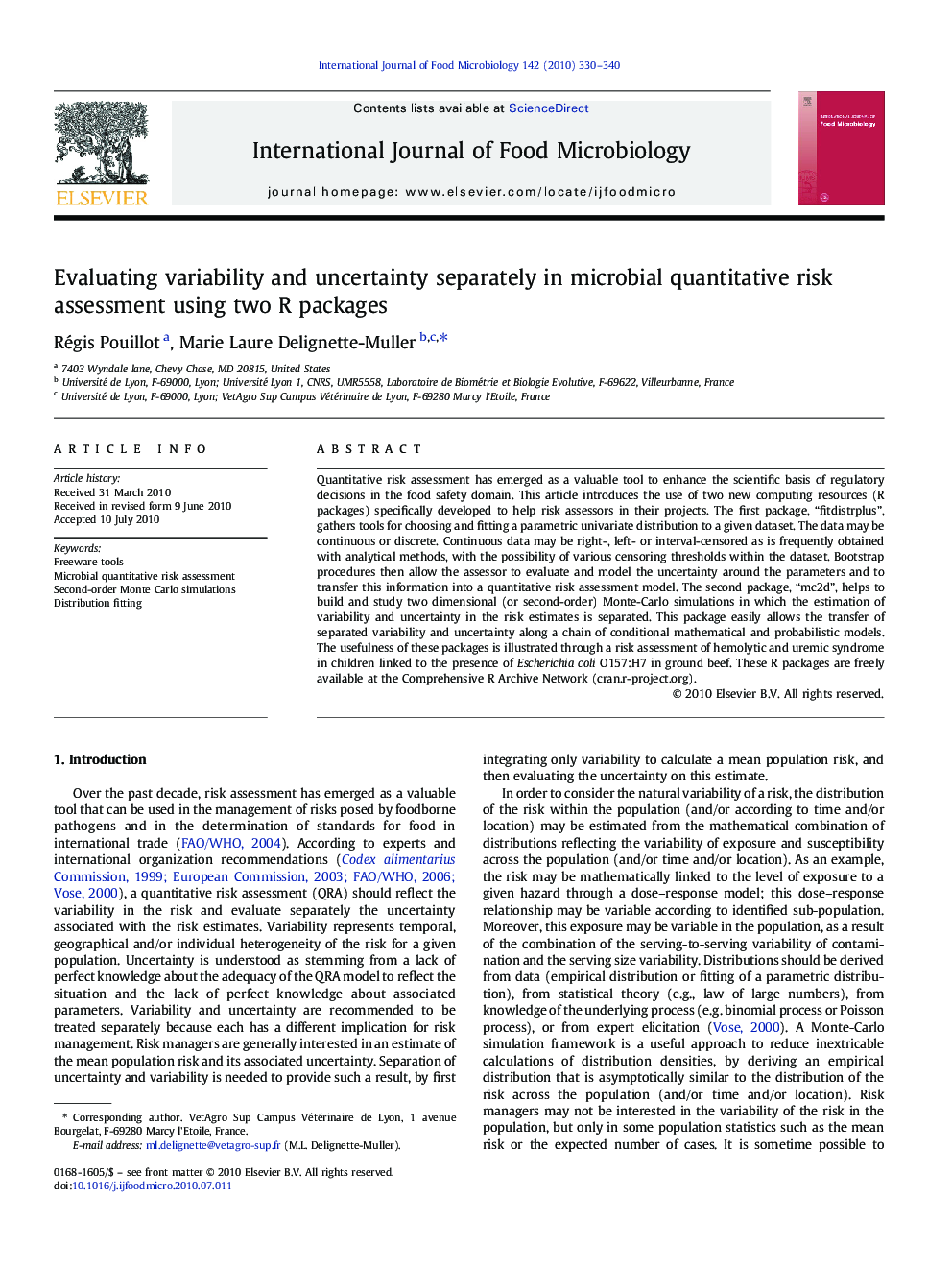| کد مقاله | کد نشریه | سال انتشار | مقاله انگلیسی | نسخه تمام متن |
|---|---|---|---|---|
| 4368317 | 1616681 | 2010 | 11 صفحه PDF | دانلود رایگان |

Quantitative risk assessment has emerged as a valuable tool to enhance the scientific basis of regulatory decisions in the food safety domain. This article introduces the use of two new computing resources (R packages) specifically developed to help risk assessors in their projects. The first package, “fitdistrplus”, gathers tools for choosing and fitting a parametric univariate distribution to a given dataset. The data may be continuous or discrete. Continuous data may be right-, left- or interval-censored as is frequently obtained with analytical methods, with the possibility of various censoring thresholds within the dataset. Bootstrap procedures then allow the assessor to evaluate and model the uncertainty around the parameters and to transfer this information into a quantitative risk assessment model. The second package, “mc2d”, helps to build and study two dimensional (or second-order) Monte-Carlo simulations in which the estimation of variability and uncertainty in the risk estimates is separated. This package easily allows the transfer of separated variability and uncertainty along a chain of conditional mathematical and probabilistic models. The usefulness of these packages is illustrated through a risk assessment of hemolytic and uremic syndrome in children linked to the presence of Escherichia coli O157:H7 in ground beef. These R packages are freely available at the Comprehensive R Archive Network (cran.r-project.org).
Journal: International Journal of Food Microbiology - Volume 142, Issue 3, 1 September 2010, Pages 330–340